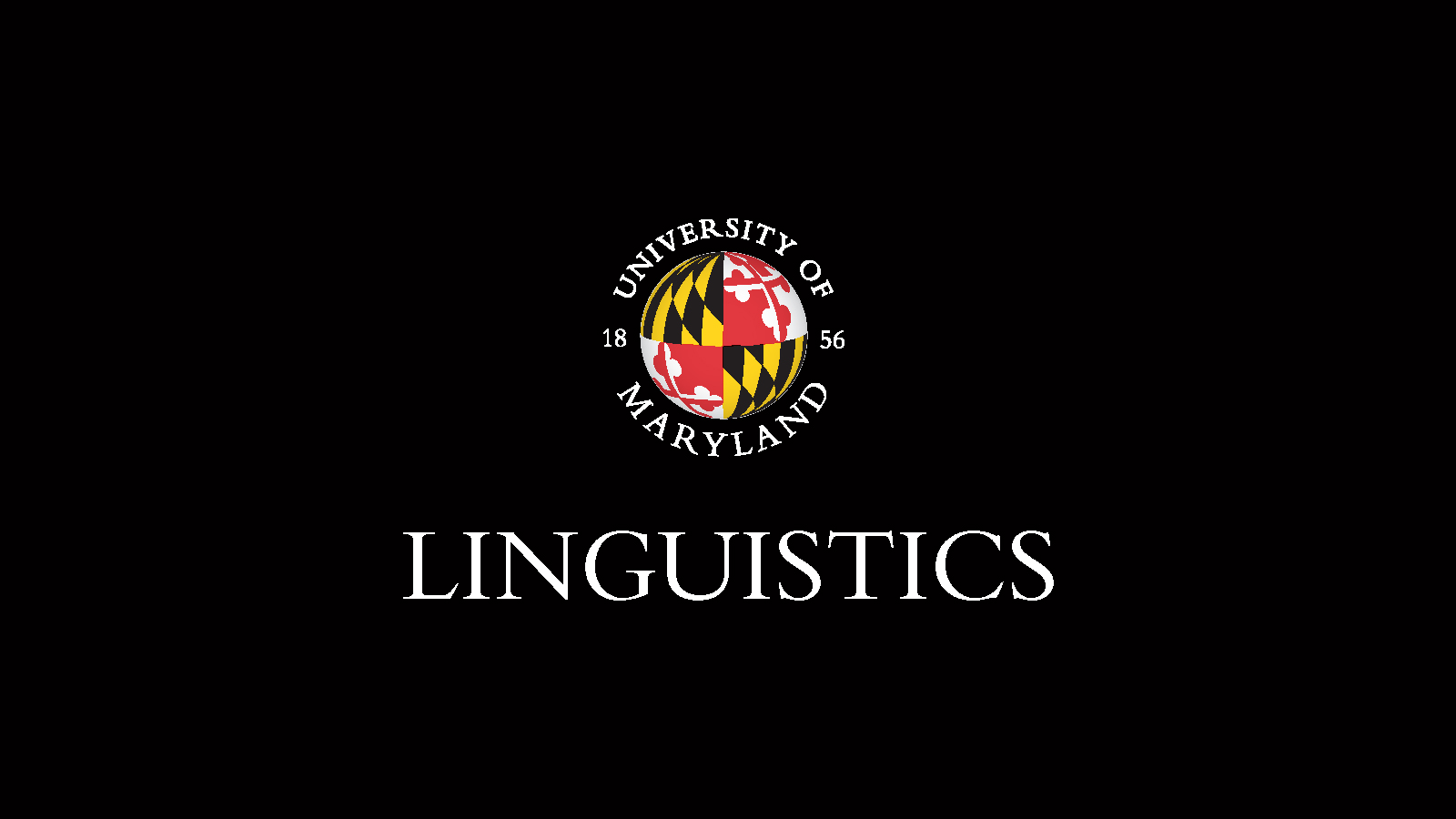UMD at CUNY (virtually)
March 12, 2020

The virtualized CUNY 2020 has Hanna, Tyler, Masato, Mina, Chia-Hsuan and Laurel from LING, as well as Zoe from HESP and Rosa from SLA; postdoctoral fellows Shohini and Andrés Buxó-Lugo; plus a host of faculty from several departments.
March 19-21, the virtualized CUNY 2020 has Hanna, Tyler, Masato, Mina, Chia-Hsuan and Laurel from LING, as well as Zoe Ovans from HESP and Rosa Lee from SLA; postdoctoral fellows Shohini Bhattasali and Andrés Buxó-Lugo; plus Colin, Philip, Jeff, Alexander and Paul Pietroski, Yi Ting Huang and Jared Novick. Two of CUNY's organizers and hosts are alumni – Brian Dillon and Shota Momma – as is its one of its keynote speakers, Matt Wagers. Other alumni contributing work are Masaya Yoshida, Jon Sprouse and Robert Fiorentino; former post-bac RAs Shayne Sloggett and Margaret Kandel; and former undergrads, Jon Burnsky and Cynthia Lukyanenko. Talks * Hanna Muller, Philip Resnik and Colin Philips, Explaining item-wise variability in Moses illusions * Tyler Knowlton, Paul Pietroski, Alexander Williams, Justin Halberda and Jeffrey Lidz, Conservative meanings with only one set: Evidence from verification * Zoe Ovans, Jared Novick, and Yi Ting Huang, Engaging cognitive control may help children ignore unreliable cues during sentence processing
Posters * Chia-Hsuan Liao and Ellen Lau, Listen my story: ERP sensitivity to argument structure violations in L2 * Masato Nakamura and Colin Phillips, Why slow words sometimes finish first: Mapping cloze to activation dynamics * Hanna Muller, Celeste Joly, Iria de Dios Flores, Philip Resnik and Colin Philips, Timing and (mis)interpretation of NPI illusions * Mina Hirzel, Laurel Perkins and Jeffrey Lidz, 19 month-olds represent and incrementally parse filler-gap dependencies * Eun-Kyoung (Rosa) Lee, Agreement attraction in nonnative language processing: The effect of sentence complexity * Chigusa Kurumada and Andrés Buxó-Lugo, Intonation interpretations are talker-sensitive, but not talker specific * Shohini Bhattasali, Murielle Popa-Fabre and John Hale, Probing the neural correlates of argument structure: A fMRI study of naturalistic language * Shohini Bhattasali and Philip Resnik, Investigating the role of context in comprehension using topical surprisal: An fMRI study Alumni presentations * Matt Wagers, Animate Intruders * Whitney Tabor, Sandra Villata and Jon Sprouse, A theory of island semi-accessibility: the case of the Strong/Weak distinction * Shota Momma, Michael Wilson and Victor Ferreira, Syntax guides verb planning in sentence production * Shota Momma and Michael Wilson, What does that tell us about production?: That speakers plan sentences hierarchically * Daniela Mertzen, Anna Laurinavichyute, Brian Dillon and Shravan Vasishth, A pre-registered large-sample investigation of similarity-based interference in English, German and Russian * Wenting Tang, Robert Fiorentino and Alison Gabriele, Enhancing sensitivity to nominal number facilitates the processing of subject-verb agreement in second language learners * Kate Stone, Elise Oltrogge, Shravan Vasishth and Sol Lago, The real-time application of grammatical constraints to prediction: Timecourse evidence from eye tracking * Wesley Orth, Masaya Yoshida and Shayne Sloggett, Tracking the time course of the NPI illusion: why do only some appear online? * Eszter Ronai and Ming Xiang, Accounting for syntactic complexity in Hungarian relative clauses * Shayne Sloggett, Nick Van Handel and Amanda Rysling, A-maze by any other name * Margaret Kandel and Jesse Snedeker, Picture naming in adults and children: effects of codability and frequency provide evidence for cascading activation in production * Jon Burnsky and Adrian Staub, Thematic role assignment difficulty revealed by a forced choice task * Cynthia Lukyanenko and Frances Blanchette, What’s in a grammar? Mainstream speakers’ processing of English negative concord

